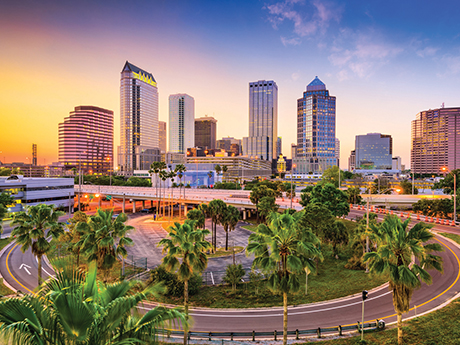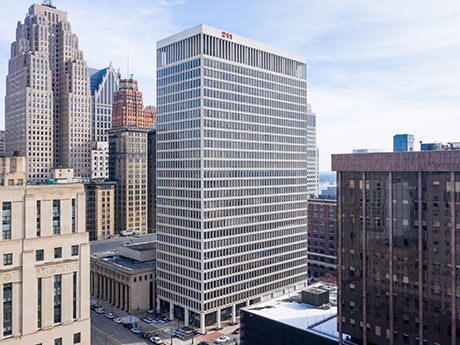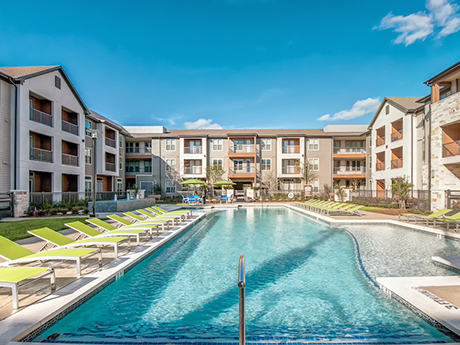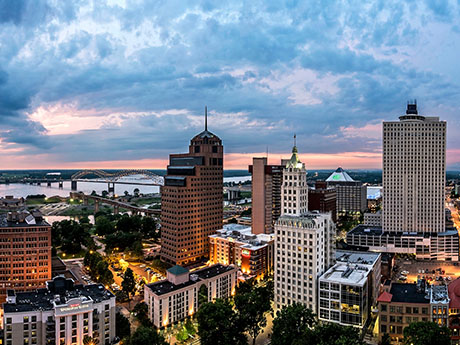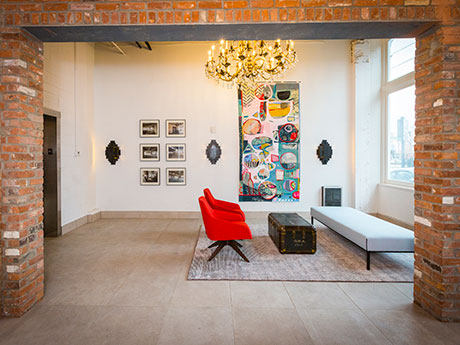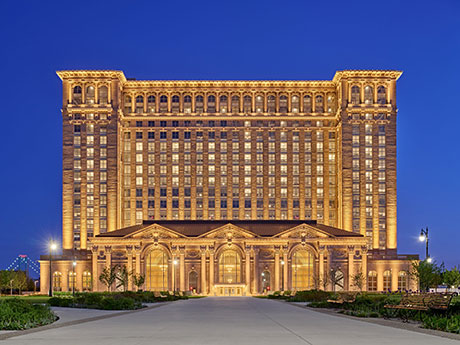— By Jessica Ramey, Executive Vice President and Co-Lead for Agency Leasing, and Patricia Raicht, Head of Research for U.S. West and Latin America, JLL — Portland’s office sector is a tale of market cycles, with many signs trending in positive directions. Leasing continues to strengthen, tenants are taking space for longer terms and certain sectors are performing better than others. All of this provides opportunities for those able to execute on them. Portland’s suburban market is second best in the U.S. with a 13 percent vacancy that is significantly below the U.S. average of 21.9 percent. By contrast, the urban market recently tied with Phoenix for the fifth-highest vacancy nationally. Vacancy had been increasing in downtown Portland, but the rate of negative absorption is starting to moderate. JLL anticipates the numbers will turn positive in 2025. Urban/Downtown Market Green-Shoots Rising The revitalization of downtown is making significant progress thanks to efforts by both local government and private-sector groups. As such, the migration of tenants out of the urban core has largely subsided. Nevertheless, as corporations begin to evaluate their space needs and location options, they remain concerned about safety and parking. Many are also increasingly looking at public transit and area amenities …
Market Reports
In the Tampa Bay area, industrial activity remains strong to this point in 2024. According to market research from Colliers, the industrial market closed the first quarter of the year with a vacancy rate below 6 percent. From 2019 to 2022, leasing activity increased, with some fluctuations between quarters. Meanwhile, 2023 saw more than 12.2 million square feet of renewals, expansions and new leases in the greater Tampa Bay area. The data backs up what we are seeing as brokers – a high-demand market with positive net absorption. With that, there are also several trends that have emerged in 2024. 1.) A generally competitive but well-balanced market. While the Tampa Bay industrial market is competitive, it’s overall well-balanced — favoring neither the landlord nor tenant in its current state (of course, dependent on size and submarket). This balance can be attributed to a slowdown in new construction, high occupancy rates, rising rental rates and continued strong demand. However, rates are not rising as quickly as they have been in the past few years, and tenants are selective about space and want to see several options and thoroughly survey the market before executing a deal. There are also pockets of the …
By Andy Gutman, Farbman Group Until recently, the post-pandemic headlines and trend lines have been clear: the office market is struggling. Lower volumes and businesses closely evaluating their operational models and space needs in the wake of a COVID-altered world have prompted concerned conversations about what’s next for an evolving office sector. Here’s the good news, however: the Detroit office landscape reflects a changing narrative around not only the commercial climate, but the entire city of Detroit. To be clear, the office resurgence in Detroit has been modest, and is clearly still in its early stages. Whether you are entering a recession or starting a recovery, there is always a transitional period where sector activity is starting to change before the shift becomes impossible to deny. Motown momentum While the understandable indecision and uncertainty of the last few years has led to some stagnation in the office space, many of the COVID-era lease expirations seem to have resolved and activity has been gradually, but steadily, picking up in the last six to 12 months. Decisions are being made and lease volume is trending up — but deals and leases are moving slower, are taking longer to get done and we …
Newton’s second law of physics holds that what goes up must come down, but unlike objects in freefall, retractions in real estate cycles tend to unfold with varying degrees of pace and severity. In the case of multifamily investment sales in Texas, it’s been clear for some time that the market is in a much different place than it was in late 2021 and early 2022, the latter period being when rate hikes began. In that golden era of multifamily investment sales, owners routinely achieved record highs of rent growth and brokers closed deals at legendarily high prices and low cap rates. What isn’t so clear is whether the market has bottomed out yet with regard to those metrics. Attaining clarity on that subject will remain difficult until deal volume rebounds and gives owners and brokers enough data to accurately establish trendlines. Like everything else in commercial real estate, the question of when deal volume will rebound is tied to movement in interest rates — unless maybe it isn’t. For as the world has seen over the past six months, what the Federal Reserve implies it will do and what it actually does aren’t always in sync. Some brokers …
Remember the “retail apocalypse”? Fast forward to today and it seems to be quite a different story. Retail is currently viewed by many as the most attractive sector within the commercial real estate industry, due in part to an all-time low vacancy rate and increasing rental rates. Atlanta’s retail vacancy rate has dropped to 3.6 percent, which is the lowest rate on record according to CoStar Group. The low vacancy rate coupled with an extremely limited amount of new retail space under development due to high construction costs has created a market unlike anything we have seen in a long time. Increased construction costs along with higher interest rates have made it cost-prohibitive to build traditional retail power centers; however, grocery-anchored retail is the anomaly with Publix taking the lead. Several mixed-use developments that include a large retail component are underway as well, including High Street in Dunwoody, Medley in Johns Creek and Centennial Yards in downtown Atlanta, just to name a few. Additionally, some retail space has been taken off line as malls reinvent themselves. Examples include the partial demolition of North DeKalb Mall in Decatur to make way for a new mixed-use development known as Lulah Hills; Northlake …
By Jeff Bender, Thomas McCormick and Seattle Stein, Cushman & Wakefield We’ve been doing this for a while. Every cycle with gang-busters demand and absorption comes to an end, as does every downturn. So, with the Cincinnati industrial market, we find ourselves in the doldrums since mid-2023, and we may not fully turn the corner until next year. Perspective and context matter, though. We’re coming off record absorption and demand at the end of 2020 and through 2022, when we also closed the year with an unsustainable 1.7 percent vacancy rate. Before the entire world paused for COVID in early and mid-2020, we had a record year in 2019 as well. While vacancy hovers around 6 percent at mid-year, that is basically the Cincinnati industrial market’s historical average. Four consecutive quarters of negative net absorption certainly defines “doldrums,” but that must be weighed against the previous 48 consecutive quarters of positive net absorption through mid-2023. We’ve also seen a slight increase in asking rental rates, up to $6.25 per square foot, despite negative absorption. So, despite a lackluster past 12 months, we have positive momentum, and that’s bolstered by many of the factors that have always made Cincinnati one of …
— By Mark Bridge, Managing Director, Bridge Multifamily Team, Capital Markets, Americas, Cushman & Wakefield — Vacancy The vacancy rate is 4.0 percent as of the mid-point in the second quarter of 2024, up 30 basis points (bps) quarter-over-quarter (QOQ) and year-over-year (YOY). The rate has been increasing in eight out of the last 11 quarters from a market low of 2.1 percent in third quarter 2021. The rate is currently 40 bps above the five-year quarterly average of 3.6 percent. Despite this recent increase, Orange County’s vacancy rate is considerably lower than the national average at 7.7 percent. OC’s vacancy rate ranks it second lowest among the nation’s 50 largest markets. Rent The average asking rent per unit currently sits at $2,513 as of the mid-point in the second quarter of 2024. The market high asking rent per unit peaked in fourth 2023 at $2,530 and has come down 0.7 percent since then. Despite the recent decrease, the asking rent per unit is still up 0.9 percent YOY. Given the tightness of the market and a healthy development pipeline, it is likely that the asking rent will remain elevated. Construction/Deliveries There are currently 23 buildings or 8,183 units under …
The Memphis office market continues to defy national post-pandemic office trends, fueled by persistent occupier demand and limited amounts of vacancy within primary submarkets. Although, the market closed out the 2023 year with 34,430 square feet of occupancy losses caused by two large tenant vacancies, the first quarter of 2024 reversed the trend as net absorption swung positive, recording 140,788 square feet of occupancy gains. The Memphis unemployment rate remained low at 3.5 percent in May, just above the Tennessee unemployment rate of 3.0 percent and below the national average of 4.0 percent, according to data from the U.S. Bureau of Labor Statistics. Ford Motor Company’s Blue Oval City began its hiring in 2023, with most of its hiring to occur in the second half of this year, which could begin to further compress the unemployment rate, as approximately 5,600 direct jobs are estimated to be created in West Tennessee. The company leased 42,910 square feet of office space on the edge of the Memphis office market. The auto giant plans to use the new space as a training facility. Additionally, the Elon Musk-led xAI company announced Memphis as being the new home for its “Gigafactory of Compute,” claiming to …
By Todd Pease, Michelle Klingenberg and Britney Aviles, JLL Since the Cincinnati office landscape upended during the pandemic, area businesses, building owners and broader leaders sought opportunities to help entice employees to return to the office, reclaim the area’s vibrancy and spur economic growth. These stakeholders realized that to entice employees back into the office, they would need to make it worth the commute. Throughout this evolution, one thing continues to drive tenants into office buildings: high-quality amenities. Amenity demands have changed over the last few years and there are new ways for building owners to create spaces that engage employees. Amenities of the past Up until 2020, the standard “five days in the office” model meant that office buildings strived to accommodate as many professionals as possible while maintaining efficiency. The space planner was the lead consultant on planning offices, and they would work with tenants to design spaces in a way that most efficiently accounted for their company headcount. Regarding office amenities, tenants most valued high parking ratios, conference facilities, gyms and locker rooms, and onsite food options. It was all about productivity and it didn’t matter if productivity took place in a gray cubical under florescent lighting. …
Metro Detroit’s retail market is characterized by strong tenant demand and investors’ eagerness to acquire and backfill vacant properties. In the downtown area, the revitalization efforts and adaptive reuse developments that started well before the pandemic continue. In fact, this year marked Detroit’s 100th commercial demolition, accelerated by $95 million in American Rescue Plan Act funding. Over the past five years, the City of Detroit has invested $1 billion in preserving or developing more than 4,600 affordable housing units. The hard work is paying off. Between July 2022 and July 2023, Detroit experienced population growth for the first time since 1957, according to the U.S. Census Bureau. A major highlight this year was the reopening of the long-abandoned train station, Michigan Central Station. Ford Motor Co. redeveloped the property in the city’s Corktown neighborhood into a 30-acre technology and cultural hub. Until Aug. 31, the first floor will be open for “Summer at The Station,” where visitors can take self-guided tours and enjoy food and beverages outside. This fall, the first commercial spaces will begin opening to the public. Meanwhile, developer Bedrock topped off construction of its Hudson’s project, the redevelopment of the former J.L. Hudson’s department store site. General …



